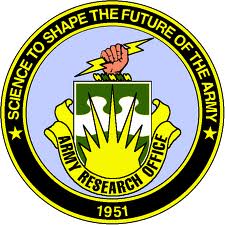Cavity Optomechanics Incubator Meeting
Events

Cavity Optomechanics Incubator Meeting
30 September - 2 October 2012
OSA Headquarters
Washington, DC
Scope of the Meeting
Keynote Speaker
Featured Topics
Registered Attendees
Scope of the Meeting
In recent years with the advent of high Q optical and mechanical micro-cavities, it has been possible to observe coupling between optical radiation and the mechanical modes in moveable structures in fine detail. Light when confined within a resonator exerts radiation pressure on the mechanical structure which gives rise to the effect of dynamic back-action. This leads to, among other things, parametric instability and opto-mechanical back-action cooling. Recently the dynamic manifestations of radiation pressure forces on micro- and Nano-mechanical objects have become an experimental reality. These observations have created a great deal of interest in exploiting these effects to study fundamental properties of light and mechanical systems and research in this topic has grown quickly over the past few years to include areas such as optical micro and nano-mechanical resonators, entanglement, generation of squeezed states of light, measurements at or beyond the standard quantum limit, single photon non-linearities, and fundamental sources leading to decoherence. In this incubator meeting, we examined the emerging areas referred to as cavity opto-mechanics and cavity quantum opto-mechanics with the goal of discussing the latest advances which define the state of the art, and exploring the opportunities afforded by this new technology to better understand coupled systems and the quantum phenomena encompassing both optical and mechanical systems.
Keynote Speaker
Dr. Nergis Mavalvala, a professor of Physics at the Massachusetts Institute of Technology, received her B.A. in Physics and Astronomy from Wellesley College in 1990, and completed her Ph.D. in 1997, under the supervision of Rai Weiss at MIT.
Nergis's research interests span two related fields -- experimental gravitational wave (GW) interferometry, and the quantum limits of precision measurement. She has been involved in experimental activities within the LIGO Laboratory over the past fifteen years, including design and implementation of interferometric sensing and control systems, commissioning of the initial LIGO detectors, study of quantum effects in future GW detectors, use of squeezed quantum states of light to enhance GW detector performance, and measurement of quantum behavior of macroscopic objects.
Featured Topics
-
On-Chip Optomechanics: new ideas for classical and quantum information processing architectures (e.g. classical: optical nonlinearities, optical memory; quantum: coherent light-matter interfaces, quantum memories, single-photon nonlinearities); coupled systems such as arrays; manybody physics, etc.
Overview: Dr. Oskar Painter, Caltech -
Multimode Phonon Physics: time dependent systems, phonon pulses, pulsed optomechanics; toward quantum acoustics, etc.
Overview: Dr. Kurt Jacobs, University of Massachusetts at Boston -
Coherent Light-Matter Interfaces: mechanical to optical, mechanical to spins, mechanical to matter-wave fields; BECs, ultra cold atoms, hybrid systems, etc.
Overview: Dr. Olivier Arcizet, Grenoble -
Tests of Fundamental Theories: fundamental sources of decoherence, predictions of quantum gravity. What can large masses do for you? Is it useful to have Planck mass objects operating in the quantum regime? What can large accelerations do for you?
Overview: Dr. Oriol Romero-Isart, Max-Planck Institute for Quantum Optics, Garching -
Theoretical Challenges and New Directions: new types of couplings, nonlinear effects, single phonon physics, quantum control, nonclassical states, etc.
Overview: Dr. Aash Clerk, McGill University, Montreal -
Experimental Challenges and New Directions: new systems, larger systems, graphene, mechanical nonlinearities, etc.
Overview: Dr. Tobias Kippenberg, EPFL Lausanne -
Mechanical Sensing/Metrology in the Quantum Regime: what are the prospects?
Overview: Dr. Keith Schwab, Caltech
Registered Attendees
Jamil Abo – Shaeer, Girish Agarwal, Markus Aspelmeyer, Gaurav Bahl, Paul Barker, Paul Barclay, Sunil Bhave, Miles Blencowe, Ania Bleszynski Jayich, Tal Carmon, Yanbei Chen, Ashish Clerk, Pierre-Francois Cohadon, Thomas Corbitt, Tatjana Curcic, Klemens Hammerer, Kurt Jacobs, Rina Kanamoto , Tobias Kippenberg, Mo Li, Florian Marquardt, Nergis Mavalvala, David McAusian, David McClelland, Michael Metcalve, Pierre Meystre, Haixing Miao, Gerard Milburn, Preeti Ovartchaiyapong, Tom Purdy, Oriol Romero-Isart, Keith Schwab, Signe Seidelin, Dan Stamper-Kurn, Michael Tobar, Paolo Tombesi, Herre van der Zanth, Mukund Vengalattore, David Vitali, Ignacio Wilson-Rae, Huan Yang
Sponsor

